News & Stories
2023
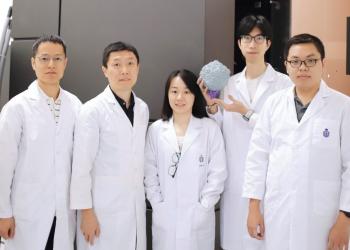
News
HKUST Researchers Report the High-res Structure of a Cyanobacterial Virus Paving the Way for More Accurate Predictions of Climate Change
A research team at HKUST has outlined the high-resolution structure of a little-known virus, improving our understanding of viral infection, which could pave the way for more accurate predictions of climate change.
News
HKUST and Tsinghua University Jointly Organize International AI Forum Gathering World’s Top Experts to Construct Global Framework for AI Governance
The Hong Kong University of Science and Technology (HKUST) and Tsinghua University jointly launched the ‘International AI Cooperation and Governance Forum 2023’ today. The two-day forum brings together over 50 world-renowned artificial intelligence (AI) experts, scholars, industry leaders, government representatives and international organization delegates to explore the opportunities and challenges brought by cutting-edge technologies such as generative AI, and discuss strategies for building a comprehensive global governance framework for the new technology.
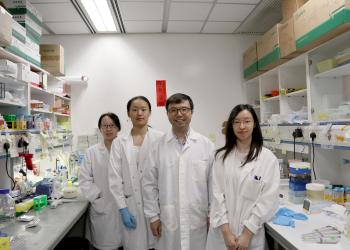
News
HKUST Elucidates How IGF2’s Secretory Pathway Mediates Muscle Stem Cell Differentiation Laying Foundation for Treating Multiple Diseases
A research team led by the Hong Kong University of Science and Technology (HKUST) recently revealed how TMED10, a type of transmembrane protein, regulates muscle stem cell differentiation through mediating the secretion of insulin-like growth factor 2 (IGF2). This provides potential therapeutic strategies to downregulate IGF2 signaling by inhibiting its secretion.
IGF2 is a pivotal player in cellular processes such as proliferation, migration, differentiation, and survival. Its dysregulation has been linked to multiple growth disorders, including Silver–Russell syndrome and Beckwith–Wiedemann syndrome. While the expression of IGF2 and its induced signal transduction pathway have been widely studied, the mechanisms through which newly synthesized IGF2 proteins are secreted to perform their functions have remained enigmatic.
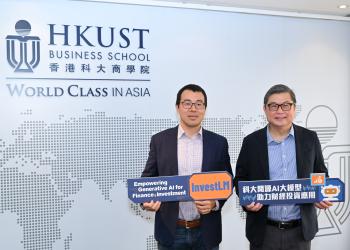
News
HKUST's InvestLM: Hong Kong's First Open-Source Large Language Model for Financial Generative AI Applications
A research team at the School of Business and Management of The Hong Kong University of Science and Technology (HKUST Business School) has developed InvestLM — Hong Kong's first open-source large language model (LLM) for financial generative AI (GenAI) applications, capable of generating investment-related, human-like responses comparable to those of well-known commercial chatbots, including OpenAI's ChatGPT. InvestLM’s model parameters[i] and the insights from its development process have been made publicly available to support industry practitioners and researchers in deploying LLM-related technology.
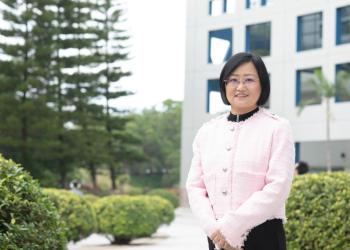
Stories
A Fresh Look at Fathoming Global Warming
With the help of HKUST’s exciting satellite remote sensing technology and data advances, School of Engineering faculty are seeking more accurate weather forecasts and greater understanding of climate change to enable more effective planning and decision-making by policymakers, companies and individuals.
News
HKUST Scientists Unveil Promising Target for Alzheimer’s Disease Treatment
A research team led by Prof. Nancy IP, the President and The Morningside Professor of Life Science at The Hong Kong University of Science and Technology (HKUST), and the Director of the Hong Kong Center for Neurodegenerative Diseases (HKCeND), has identified VCAM1, a cell surface protein found on immune cells of the brain, as a therapeutic target for Alzheimer’s disease (AD), paving the way for developing novel therapeutics to combat this debilitating condition.
AD is a devastating neurodegenerative disorder that affects over 50 million people worldwide. A key pathological hallmark of the disease is the accumulation of amyloid-beta (Aβ) plaques in the brain, which leads to progressive decline in cognitive function. Microglia, resident immune cells of the brain, are thought to play a vital role in the clearance of Aβ plaques, a function that is impaired in AD.
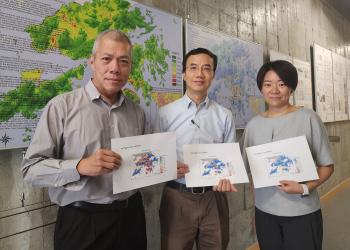
News
HKUST Collaborative Research Predicts Hot Nights to Increase by 50% in 2040s
In recent years, Hong Kong has experienced a series of extreme weather events. In July 2022, the scorching heat broke 11 records, while in 2023, the city experienced hourly rainfall of 158.1mm, the highest since records began in 1884. An inter-university research team by The Hong Kong University of Science and Technology (HKUST), The Chinese University of Hong Kong (CUHK), and the University of Hong Kong (HKU) conducted a study on extreme weather events and their impacts on the built environment in Hong Kong, aiming to assess the trends and effects of extreme weather events under the influence of global climate change.
Projected increase of 50% in hot nights and over 40% in extreme rainfall in 2040-2049
News
HKUST & GBAAA Jointly Organized Inaugural AI Symposium
It will take years or decades for the development of artificial intelligence (AI) to reach human-level AI. Robots will not take over the world. “Open source” is the only option.
These are among the thought-provoking insights that Turing Prize Winner Prof. Yann LeCun, hailed by the media as one of the “Godfathers of AI,” has shared with AI experts, scholars, industry leaders from around the world and students at a symposium held recently in Hong Kong.
Entitled AI NEW HORIZONS 2023: A Symposium with Scientific Leaders, the symposium was jointly hosted by the Hong Kong University of Science and Technology (HKUST) and the Greater Bay Area Association of Academicians (GBAAA).
In his keynote speech, Prof. LeCun envisioned objective-driven AI will help predict the future, and Joint Embedding Predictive Architecture (JEPA) model will make a paradigm shift in predictive modeling, that JEPA could bring about a “new Renaissance.”






